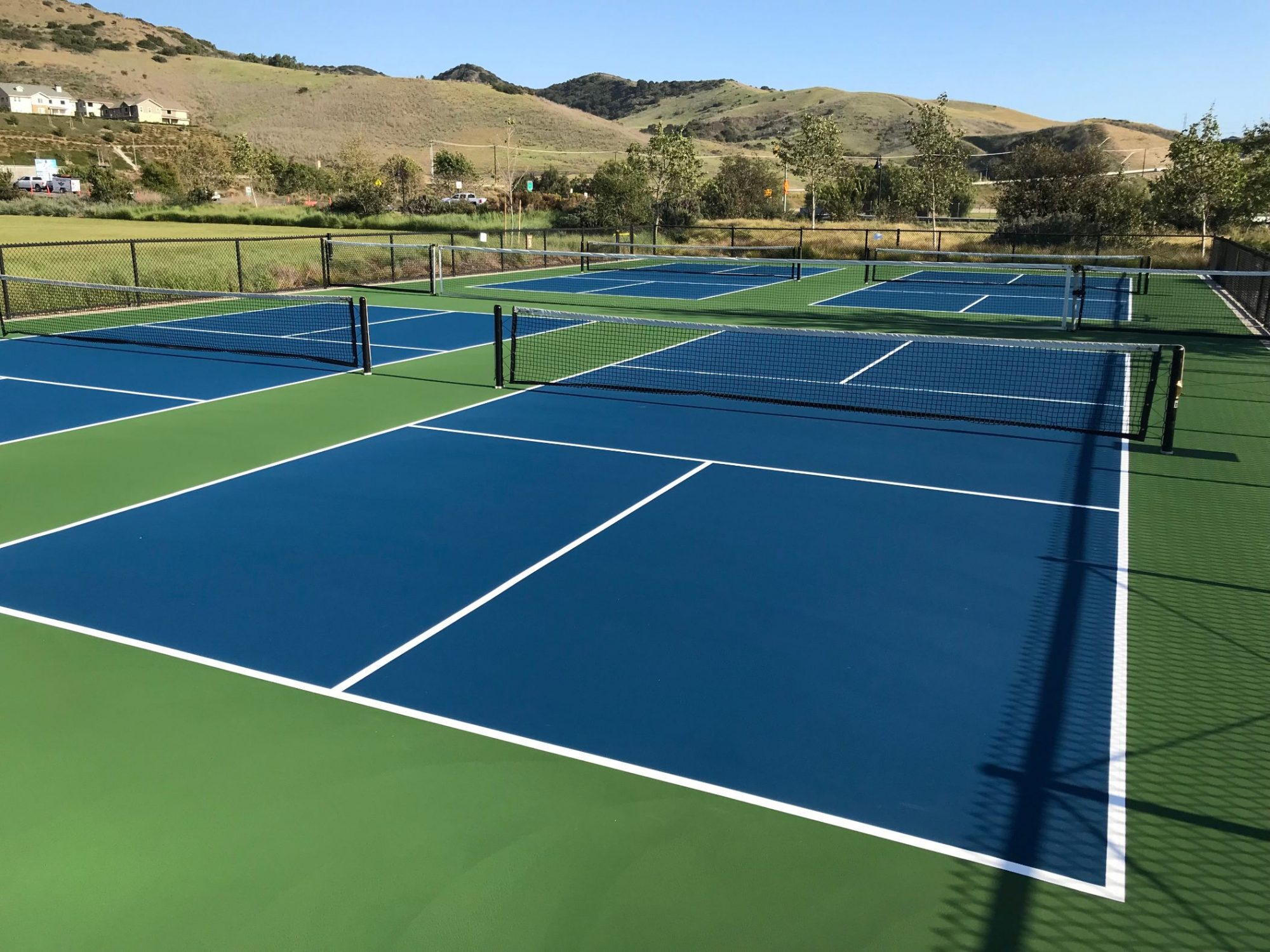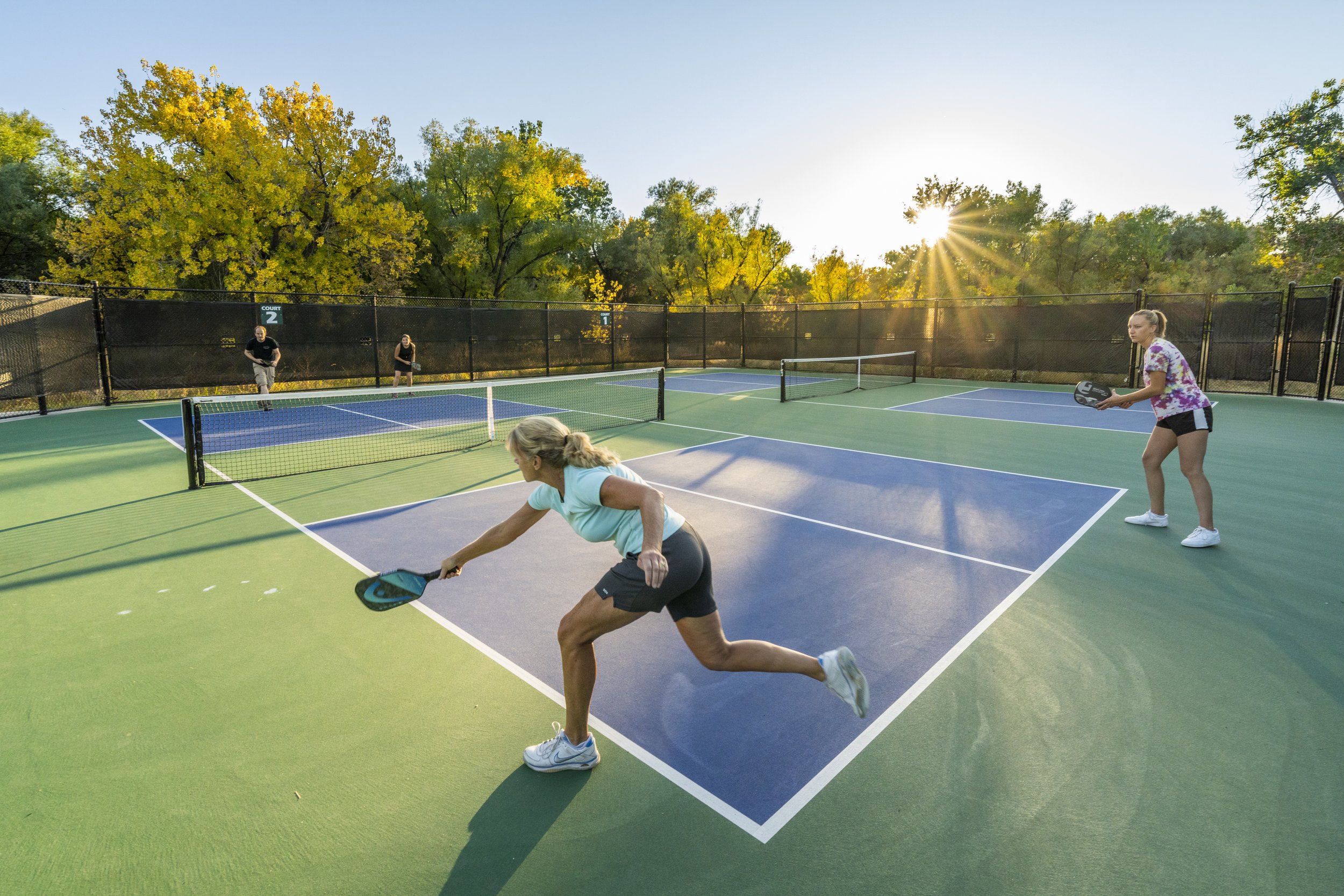The Leading Pickleball Courts Design & Construction Experts in Illinois and Midwest
The Leading Pickleball Courts Design & Construction Experts in Illinois and Midwest
Blog Article
Secret Elements in the Building And Construction of Pickleball Courts: From Website Selection to Final Coatings
The building of pickleball courts encompasses a series of critical aspects, beginning with the choice of an appropriate website that stabilizes accessibility with environmental factors to consider. Vital components such as court dimensions, surface area products, and drainage systems considerably influence not only the high quality of play yet also the long life of the center. Additionally, interest to lighting and ending up touches can elevate the general experience for gamers and viewers alike. Understanding exactly how each of these parts interrelates might reveal insights that are typically forgotten, prompting a more detailed examination of finest methods in court building and construction.
Site Selection Criteria
When starting the building of pickleball courts, it is vital to nail down the website option standards that will certainly make sure ideal playability and availability. The place should be easily obtainable for gamers, preferably located near property areas or community facilities, to encourage involvement.
Additionally, the terrain should be degree and steady, as unequal ground can lead to safety threats and impact gameplay. Sufficient drain is likewise critical; selecting a website with great water overflow will certainly assist maintain court conditions throughout negative weather condition.
Another essential consideration is the availability of energies. Access to electrical power and water is required for lights and maintenance purposes. Furthermore, proximity to parking centers is important, facilitating easy accessibility for players and viewers alike.
Environmental variables can not be neglected; all-natural shade from trees can boost player convenience, while exposure to dominating winds may interrupt play. Zoning policies and area support must be taken into consideration to guarantee that the task aligns with regional standards and obtains the backing it requires for effective execution. By thoroughly examining these standards, stakeholders can create an inviting and practical setting for pickleball enthusiasts.
Court Capacities and Format
To guarantee optimum gameplay and adherence to guidelines, the measurements and design of pickleball courts need to be very carefully specified. A common pickleball court gauges 20 feet in size and 44 feet in length for both singles and increases play.
The web elevation is evaluated 36 inches at the sidelines and 34 inches at the center, producing a small dip that affects ball trajectory. Court markings are equally vital; lines need to be 2 inches vast and unique in color to guarantee visibility.
Additionally, a barrier zone surrounding the court is advisable, generally extending 5 to 10 feet beyond the sidelines and baselines to accommodate gamers' motions and improve safety. Correct design and dimensions not only make certain compliance with official laws however also boost the general having fun experience, suiting both recreational and competitive play. Mindful planning in these locations is vital to the successful construction of pickleball courts.
Surface Area Product Options
Picking the best surface area material for pickleball courts is essential for making certain ideal gamer performance and safety and security. The selection of surface can substantially impact gameplay, including sphere bounce, traction, and player comfort.
There are several options readily available, each with its distinctive features. Asphalt is a popular selection because of its longevity and low upkeep demands. It gives a solid having fun surface area that can endure numerous climate condition yet may need routine resurfacing.
Concrete is one more commonly made use of material, using excellent durability and a smooth coating. It enables constant ball bounce but can be hard on gamers' joints, making it much less desirable for lasting play without appropriate cushioning.
For those looking for enhanced comfort and shock absorption, supported acrylic surfaces provide a viable alternative. These surfaces integrate a base layer with an acrylic overcoat, giving improved traction and like it a softer feel, which is valuable for decreasing the danger of injuries.
Finally, synthetic grass is obtaining grip, particularly for multi-purpose facilities. Its flexibility and lower maintenance needs make it an eye-catching alternative, though it may not give the same ball action as conventional hard courts. Mindful factor to consider of these alternatives will certainly make sure an ideal playing atmosphere.
Drain and Illumination Factors To Consider
Proper water drainage and efficient lighting are essential parts in the building of pickleball courts, considerably influencing both playability and safety and security. Sufficient drainage systems protect against water build-up, which can lead to slippery surface areas and damage to the court framework.
Lights is equally important, particularly for courts meant for night use. Proper lighting boosts visibility, making sure that gamers can see the ball clearly and lowering the threat of crashes. The positioning of lighting fixtures must be purposefully planned to eliminate shadows and supply even distribution of light across the court. LED lights are recommended for their energy effectiveness and long life, offering intense lighting while reducing operational expenses.

Final Finishes and Maintenance
After attending to drain and illumination factors to consider, interest transforms to the final surfaces and continuous maintenance of pickleball courts. Illinois and midwest. The choice of surface material is vital, as it affects both playability and longevity. Usual choices include acrylic finishings and specialized sports surfaces that provide optimum grip and padding. These surfaces ought to be applied in multiple layers to make certain strength versus weather condition elements and wear.

Seasonal maintenance may consist of resurfacing every few years, depending upon use and environmental aspects. Properly preserving webs, court lines, and surrounding areas is just as important to offer a secure and enjoyable playing experience. By buying top quality finishes and adhering to an organized upkeep schedule, facility owners can guarantee their pickleball courts continue to be in excellent condition for many years to come.
Final Thought
In conclusion, the effective building and construction of pickleball courts hinges on precise attention to numerous crucial elements. Quality finishes and a robust upkeep schedule are essential for maintaining the court's condition, enhancing the total experience for basics players and viewers alike.
Report this page